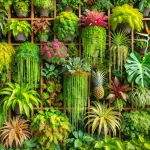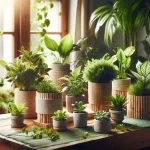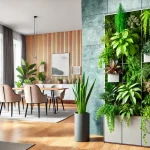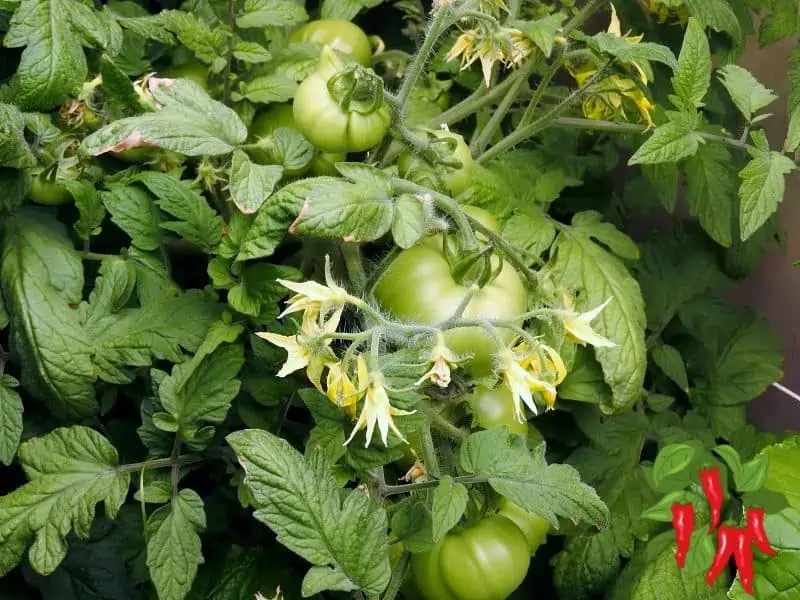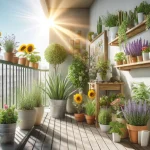This post may contain affiliate links. If you buy something from one of our links we may earn a commission. Thanks
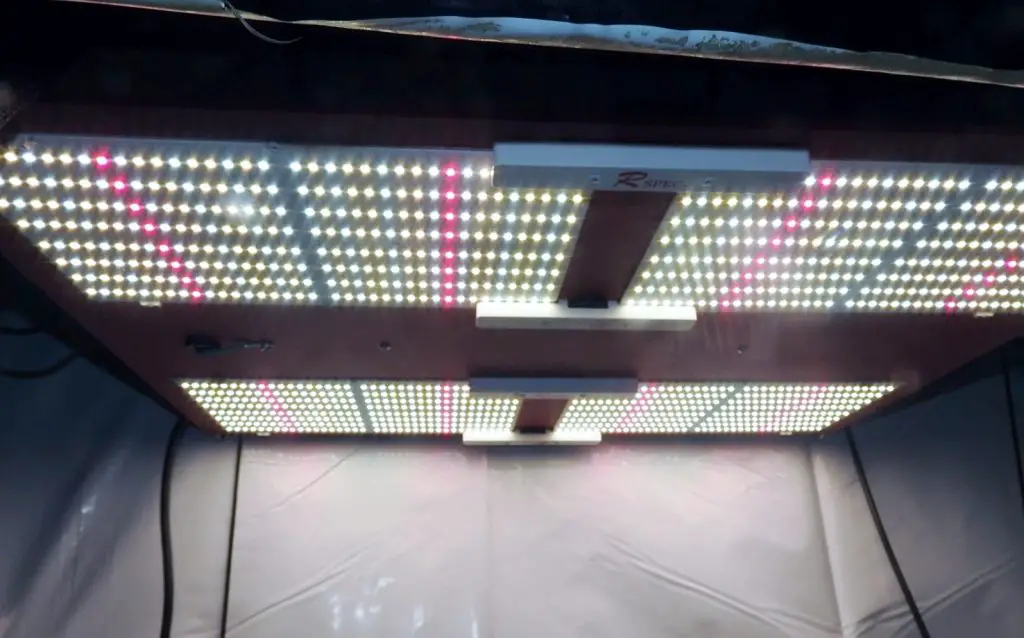
LED hydroponic lighting is the future of indoor farming. LED lights are more energy efficient than traditional grow lights.
They produce less heat, use less energy and offer a lighting spectrum that plants thrive under.
This makes them ideal for use in hydroponic systems. In this blog post, we will discuss the benefits of LED hydroponic lighting, and we will provide tips for setting up your own LED grow system!
One of the most important aspects of hydroponic gardening is choosing the right lighting.
Why Choose LED Hydroponic Lighting?
While traditional HID grow lights can be effective, they can also be quite expensive to operate and give off a lot of heat.
The more efficient a light is in producing light from electricity the less heat it puts out.
While an HPS light puts out a lot of light it also gets very hot. Heat is wasted energy that did not be converted to light.
A good LED light will use half the watts an HID will and produce the same amount of light energy or photons. In other words, LED lights are twice as efficient at turning power into light.
If you are thinking about converting from high-pressure sodium or metal halide lighting to LED lighting you can use half the wattage you were before and get the same amount of light.
This is huge because if your electric capacity is limited LED lighting allows you to double your growing space with no extra cost other than replacing your old HID light.
What Are LED Lights And What Do They Do?
LED lights are special types of light-emitting diodes (LEDs). LED lights are more energy efficient than traditional grow lights, and they produce less heat.
This makes them ideal for use in hydroponic systems. LED lights emit specific wavelengths of light that are ideal for plant growth.
The Benefits Of Using LED Hydroponic Lighting:
If you’re looking for a way to improve your indoor farming operation, LED hydroponic lighting is a great option to consider and it offers some important benefits over other types of lighting.
• LED lights are more energy efficient than traditional grow lights.
• LED lights produce less heat, which is ideal for use in hydroponic systems.
• LED lights emit a specific wavelength of light that is ideal for plant growth.
• LED lights can last over 10,000 hours so you won’t need to replace bulbs as often as with another lighting type.
LED hydroponic lighting is a popular alternative that is much more energy efficient. LEDs also emit very little heat, which can be beneficial in a tight growing space.
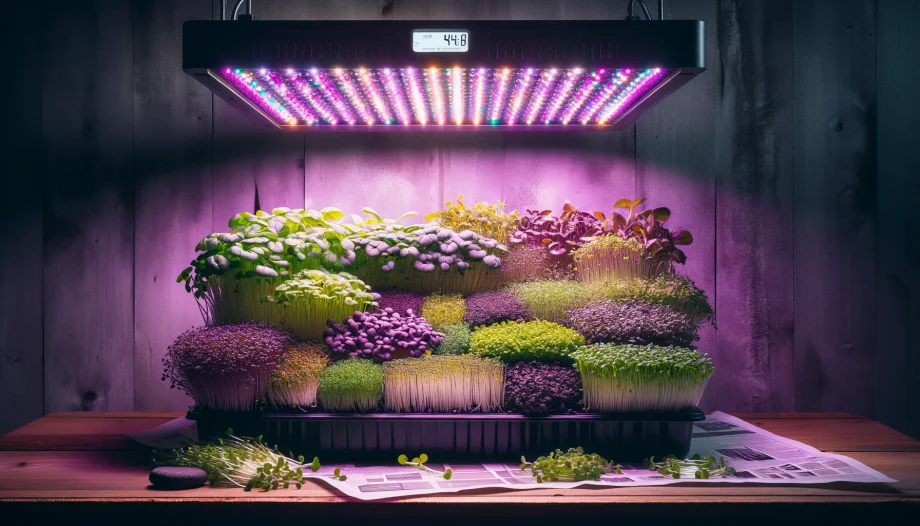
In addition, LED grow lights provide the full spectrum of light your plants need to grow.
You won’t have to worry about changing bulbs like other lighting types.
Many LED grow lights have dimmers to raise or lower light levels while some models allow you to adjust the light spectrum.
Whether you are just starting out in hydroponics or you are looking to upgrade your existing setup, LED lighting is definitely worth considering.
Choosing LED Hydroponic Lighting
You want to get the right size LED grow light for your garden. For most plants, you will want about 30-35 watts per square foot.
Tomatoes and peppers have high light needs but lettuce and most greens don’t need quite as much light.
Many manufacturers mislead gardeners with their light’s actual wattage. They add up the wattage of all the diodes and use that number.
But most LED grow lights don’t fully power these LEDs, So when choosing a LED light you need to find the watts at the wall.
You should be able to find this in the specifications. This is the actual wattage the light can produce and what you should use to calculate the wattage you need.
Choose A LED With A Dimmer
Most LED lights have a dimmer switch but some cheaper LEDs don’t have one. You should avoid those.
It is always better to buy a light that is larger than you need. You can lower or raise light levels with a dimmer or by raising the height of the light.
If your light is undersized there is no way to turn it up and if you move it closer you will be decreasing its coverage.
Choose A White Light LED
I am using the SpiderFarmer SF 2000 pictured below in my vegetable garden. It works great and is priced right too.
Older LED lights only had 2 colors red and blue but plants need more than red and blue light.
White light is not actually white. It is a mix of all the colors under the rainbow that plants need to grow.
Plants have evolved over millions of years to grow under natural sunlight and using a white light LED is as close as we can get to this indoors. At least at this time.
LED Hydroponic Lighting And PAR
When choosing LEDs for hydroponic gardening, it’s important to pay attention to the PAR value.
This stands for “photosynthetically active radiation” and indicates the range of wavelengths that are most effective for photosynthesis from 400 to 700 nanometers.
PAR is measured in micromoles or µ. This is a measure of how many photons of light energy are produced.
Read more about PAR Photosynthetically active radiation – Wikipedia
Choosing LEDs with a high PAR value will help to ensure that your plants receive the full spectrum of light they need for healthy growth.
You can use a par meter to measure the amount of light your plants are getting.
It won’t be even it will be highest directly under the light and will drop off towards the corners.
Here is a par chart for the Spider Farmer SF 2000. You can check it out on Amazon here.
Also here is my review Spider Farmer SF2000 Unboxing And Review (indoorvegetablegrower.com)
FAQ: Exploring LED Hydroponic Lighting
LED hydroponic lighting has become a popular choice for many indoor gardeners, offering numerous advantages over traditional lighting options.
However, it can also present a learning curve for those new to hydroponics. Here, we’ll delve into some of the common questions that readers may have about LED hydroponic lighting.
Q: What makes LED lights more suitable for hydroponic systems compared to traditional lights?
A: LED lights are more energy-efficient, have a longer lifespan, and produce less heat compared to traditional lights like HID or fluorescent bulbs.
They can emit specific wavelengths required for different growth stages, and many models allow dimming and some allow spectrum adjustment.
These features make them ideal for hydroponic systems, where precise control of light and temperature is crucial.
Q: How do I know what size and wattage of LED light to choose for my hydroponic system?
A: Choosing the right size and wattage depends on the type of plants you’re growing and the size of your grow space.
Generally, you’ll want about 30-35 watts per square foot for most high-light plants like tomatoes. While some leafy greens, herbs, and lettuce have lower light requirements.
Always refer to the actual wattage (watts at the wall) and consult with the manufacturer’s guidelines or a hydroponic specialist to ensure you select the appropriate LED light for your needs.
Q: Can I use regular household LED bulbs for my hydroponic garden?
A: While regular household LED bulbs can emit light that plants can use, they are generally not designed for plant growth and may not provide the proper spectrum or intensity required.
Grow-specific LED lights are engineered to produce the full spectrum of light that plants need and often come with features like dimming to optimize growth at different stages.
Q: Are LED hydroponic lights safe, and do they require special maintenance?
A: LED hydroponic lights are generally safe when used according to the manufacturer’s instructions.
They don’t contain harmful substances like mercury, found in some traditional bulbs, and produce less heat, reducing the risk of burns or fire.
Maintenance is typically minimal but may include regular cleaning to remove dust and checking connections.
Always follow the specific maintenance guidelines provided by the manufacturer for optimal performance and safety.
LED Hydroponic Lighting Final Thoughts
If you’re thinking about starting a hydroponic garden, one of the most important decisions you’ll make is what type of lighting to use.
One popular option is LED hydroponic lighting. LEDs (light-emitting diodes) are extremely energy efficient and produce very little heat, which makes them ideal for use in a hydroponic system.
They also have a long lifespan, so you won’t need to replace your bulbs as often as with other types of lighting.
Another benefit of LED lighting is that it can be customized to provide the specific wavelength of light that your plants need for optimal growth on some models.
Some models offer a veg and bloom setting. The veg setting emits more blue light which helps keep plants stocky.
The bloom spectrum will include more red in the spectrum which encourages flowering and fruiting.
Whether you’re growing salad greens or tropical flowers, there’s an LED light that will help your plants thrive.
If you’re looking for an environmentally friendly and efficient way to light your hydroponic garden, LED hydroponic lighting is a great option to consider.
LED hydroponic lighting systems are a great option for indoor farmers and gardeners who want to improve their yields and save money on energy costs.
LED lights use less energy than traditional incandescent bulbs, fluorescents, or HID (high-intensity discharge) lights like HPS or metal halide lights.
So you’ll save money on your electric bill each month. LED lights also last longer than traditional bulbs, so you won’t have to replace them as often.
If you’re looking for a way to improve your indoor farming operation, LED hydroponic lighting is the way to go. Thanks for reading!
Read more:
Are Hydroponic Nutrients Required? 7 Easy Tips For Beginners
Hydroponic Gardening At Home: Easy Gardens Without Soil
Hydroponic Grow Medium [What You Need To Know]
Visit my Amazon Influencer Page for videos and gardening products Grow Your Own Garden



